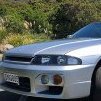Few Minor Things That I'm Too Stupid To Do
Announcements
-
Similar Content
-
Latest Posts
-
Guys and what about hybrid turbo? Is it "ok" and can i get it here(EU/CZE) done? Or do you need some "special" "wheel" or something?
-
Yeah nice idea, you mean to suction it to the gauges? I hadn't thought of that.
-
By Dose Pipe Sutututu · Posted
A few suggestions: Do you have the option of retarding your exhaust cam gear to bring the power band over to the left? VCT would be turned off after you make peak torque, you see the power/torque will decay faster with it left on all the way to the limiter Once VCT is turned off, you'll find the motor will take a bit more timing being ramped in Send its mum, more boost! Of course, depends on your exhaust pressure.
-






Recommended Posts
Create an account or sign in to comment
You need to be a member in order to leave a comment
Create an account
Sign up for a new account in our community. It's easy!
Register a new accountSign in
Already have an account? Sign in here.
Sign In Now